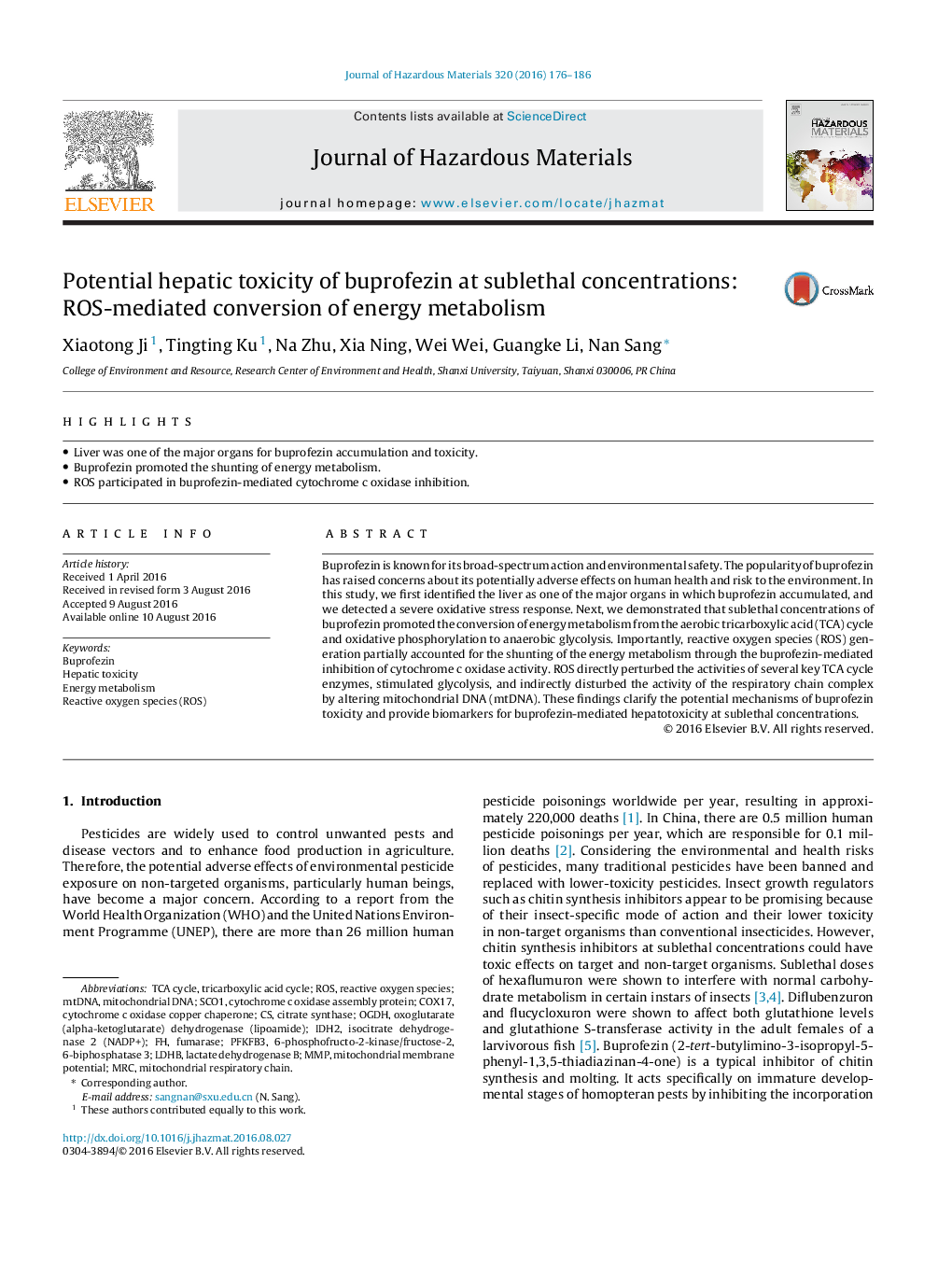| Article ID | Journal | Published Year | Pages | File Type |
|---|---|---|---|---|
| 575213 | Journal of Hazardous Materials | 2016 | 11 Pages |
Abstract
Buprofezin is known for its broad-spectrum action and environmental safety. The popularity of buprofezin has raised concerns about its potentially adverse effects on human health and risk to the environment. In this study, we first identified the liver as one of the major organs in which buprofezin accumulated, and we detected a severe oxidative stress response. Next, we demonstrated that sublethal concentrations of buprofezin promoted the conversion of energy metabolism from the aerobic tricarboxylic acid (TCA) cycle and oxidative phosphorylation to anaerobic glycolysis. Importantly, reactive oxygen species (ROS) generation partially accounted for the shunting of the energy metabolism through the buprofezin-mediated inhibition of cytochrome c oxidase activity. ROS directly perturbed the activities of several key TCA cycle enzymes, stimulated glycolysis, and indirectly disturbed the activity of the respiratory chain complex by altering mitochondrial DNA (mtDNA). These findings clarify the potential mechanisms of buprofezin toxicity and provide biomarkers for buprofezin-mediated hepatotoxicity at sublethal concentrations.
Keywords
Related Topics
Physical Sciences and Engineering
Chemical Engineering
Chemical Health and Safety
Authors
Xiaotong Ji, Tingting Ku, Na Zhu, Xia Ning, Wei Wei, Guangke Li, Nan Sang,
